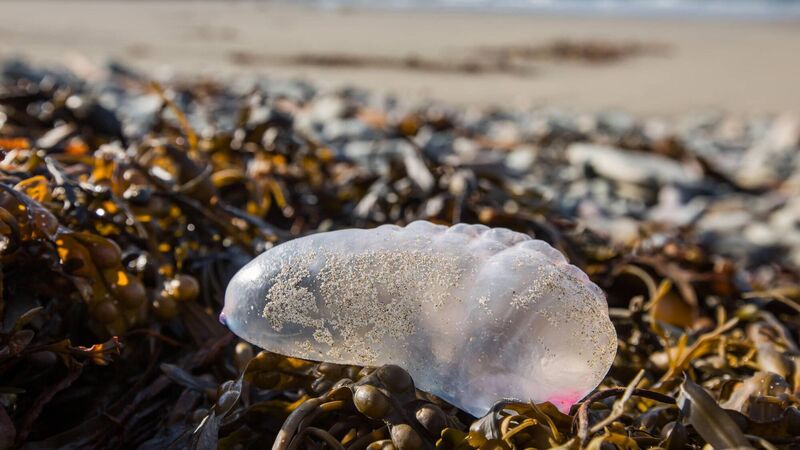Life Hack: What to do if you’re stung by a jellyfish and why you should never pee on the sting

While you might not see what stings you at a beach, you’ll feel its impact immediately
Just when you thought it was safe to get back into the water... No, not sharks — jellyfish.
As we make the most of the warmer weather, navigating around these stinging visitors will be a challenge for those of us who want to swim in the sea — or at least splash about in the shallower waves.
If you haven’t been stung yourself, you probably know someone who has, and you’ve likely heard of the horror of both the sting and the treatment, especially if that sting was treated with urine.
It is commonly believed that peeing on a jellyfish sting will ease the pain, but numerous studies have shown this is not the case.
In fact, it can often make the situation worse: urine can actually aggravate the jellyfish’s stingers into releasing more venom from the nematocysts that are left on the skin.
Swimmers can be stung from a distance, as many
jellyfish have long stingers — so while you might not see the culprit, you’ll feel its impact immediately.
Once a person is stung, the skin breaks out in angry, red marks that throb with pain. It starts to itch, burn, and throb as it blisters, but the second thing you should never do is scratch the itch. Much like urinating on it, scratching the burn can also release even more venom.
So what works in a pinch to soothe the area?
You can rinse the area with saltwater (lucky you happen to be at the beach, right?). This deactivates any nematocysts on the skin, but make sure you don’t use freshwater for this as it can have the opposite effect.
Another option is to rinse the sore area with vinegar, so if there’s a nearby chip van, send someone over to ask for some.
After carefully bathing the area, if you’re left with bits of tentacle on the skin, it can be removed by coating it with shaving cream or a runny paste of seawater and sand, followed by shaving it off with a razor or something like a credit card.
The pain from a jellyfish sting can last up to 24 hours, reaching a painful peak five minutes after the sting happens before fading over the next few hours.
For lingering pain, over-the-counter pain medication can work to dull the ache if you are in discomfort.
Jellyfish stings are rarely life-threatening, but contact a GP or emergency department if you have concerns.

Unlimited access. Half the price.
Try unlimited access from only €1.50 a week
Already a subscriber? Sign in
CONNECT WITH US TODAY
Be the first to know the latest news and updates

Celebrating 25 years of health and wellbeing










